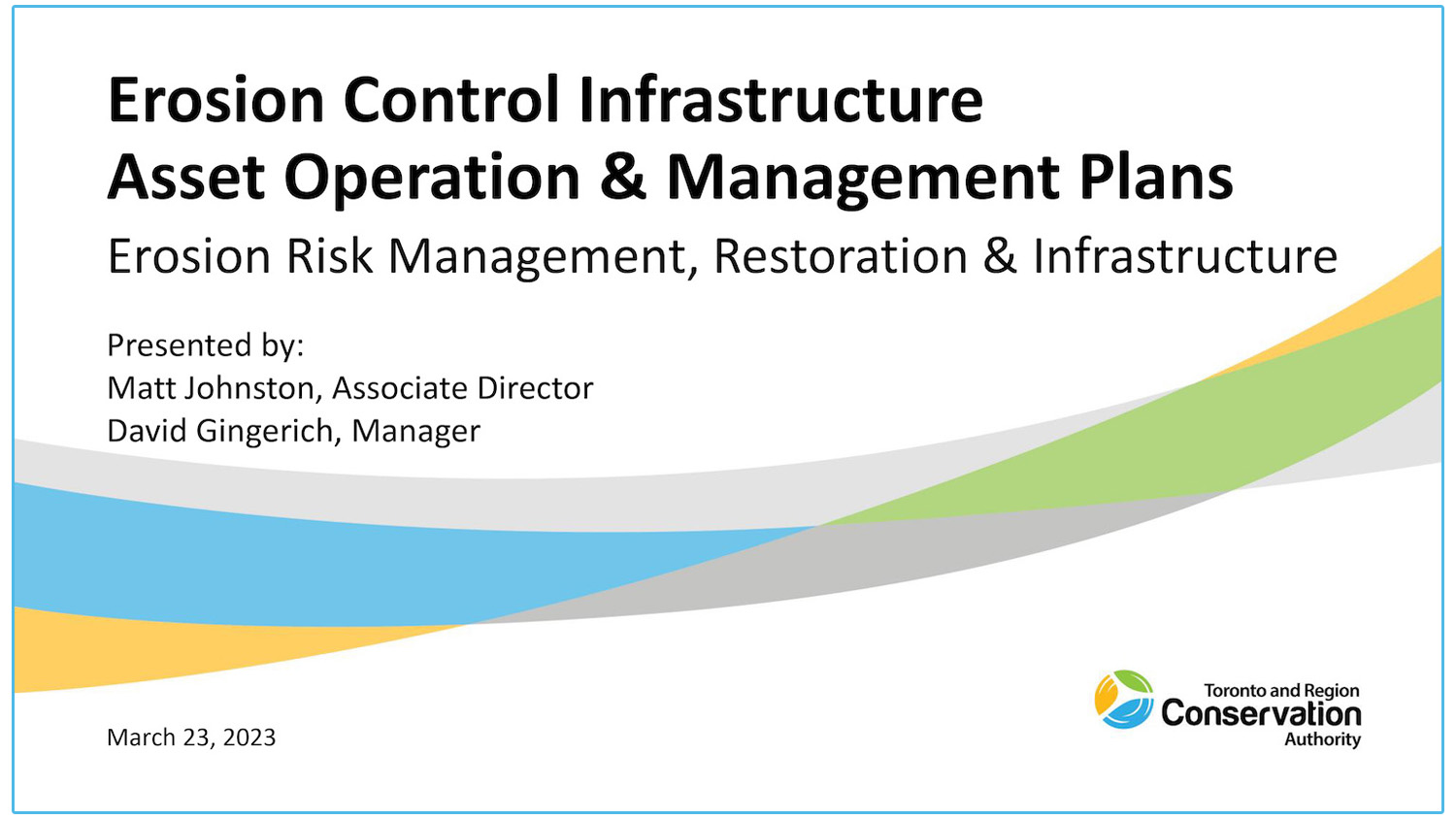TRACK 2, DAY 2
ABSTRACT
With new regulatory requirements on the horizon under O. Reg. 686/21, Toronto and Region Conservation Authority’s (TRCA) Erosion Risk Management Program (ERMP) continues to develop new approaches to manage an ever-growing network of erosion control structures.
To prepare for the December 31, 2024 deadline (develop and implement an asset management plan for its essential erosion control infrastructure) TRCA’s ERMP has initiated a program of geospatial delineation of erosion as a natural hazard within its jurisdiction through the analyses of terrain models, produced from Light Detection and Ranging (LiDAR) data collection across its jurisdiction.
Reach-based data collection is being piloted by TRCA’s Remotely Piloted Aircraft System (RPAS) team. Geospatial statistical analyses are used to evaluate temporal terrain changes identifying areas of significant historical movement of watercourses and valley slopes.
ERMP staff are also partnering with academic institutions to explore the use of artificial intelligence (AI) to connect the longevity of essential erosion control structures to ecosystem services, and therefore the value of both major and minor maintenance and repair.
Continued innovative data collection and analytical techniques will provide TRCA with the baseline erosion hazard data required to manage erosion control infrastructure protecting essential infrastructure.
ABOUT THE PRESENTERS

Matt Johnston, Toronto and Region Conservation Authority (TRCA)
Matt is the Associate Director of Erosion Risk Management at TRCA and has over 10 years of experience implementing projects and developing programs related to erosion risk mitigation.

David Gingerich, Toronto and Region Conservation Authority (TRCA)
David guides of team of Erosion Risk Management staff providing innovative solutions to data collection and geospatial analyses of erosions hazards, assisting decision makers in the remediation of erosion hazard sites that decreases the risk to essential infrastructure.

